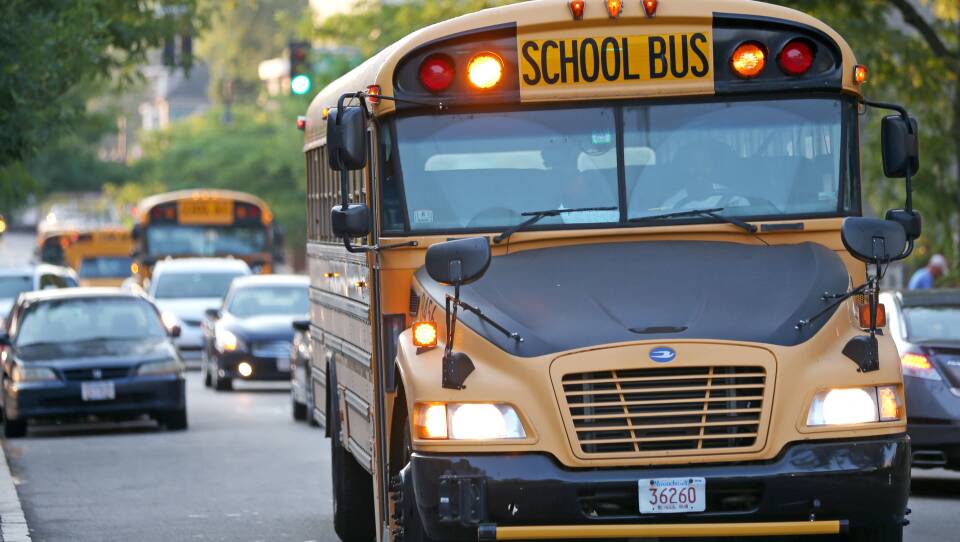Boston Public Schools announcedin 2016 it would add 300 seats to a free test prep program for students applying to the city’s exam schools. The expansion was targeted at black and brown students who are underrepresented at those schools.
Since then, the pool of students accepted to Boston Latin Academy, Boston Latin School and John D. O’Bryant School of Mathematics and Science has actually gotten whiter, according to school department data.
Seventeen percent of the sixth-graders invited to the exam schools for the 2017-2018 school year were black. For this school year, that number increased to 18 percent but dropped to 14.6 percent for the students invited for the 2019-2020 school year. That means there are 41 fewer black invitees for the upcoming academic year than last year.
The Hispanic representation among sixth-grade invitees stayed stagnant for two years and increased by half a percent to 21.5 percent for next school year. That's an increase of five from 2017-2018 to 2019-2020.
Meanwhile, 38 percent of the 2017-2018 invitees were white, compared with 39.1 percent of next school year’s invitees. A total of 421 white sixth-graders were invited to attend the exam schools next year, compared with 408 for 2017-2018.
“It is just wholesale discrimination,” said Edith Bazile, the president of Black Educators Alliance of Massachusetts. “If Boston Public Schools is serious about including everyone, then they have to change their policy, because their policy is designed to be discriminatory.”
The district declined to answer questions about why the expansion of the test prep program, called the Exam School Initiative, did not result in more black and brown children being invited to attend the exam schools.
The Exam School Initiative began in 2000 to provide summer and fall learning for 450 incoming sixth-graders, who then take the Independent School Entrance Test, or ISEE, which comprises half of the admissions criteria for entry into the schools. With the 2016 expansion, the program now serves 750.
“Shame on the district for continuing, year after year, [for] more than a decade, using a test that they know is an egregious denial of students of color entering into the exam schools,” said Bazile. “Why does Boston Public Schools as a district continue to deny equal educational opportunity — equity — to students of color, and what is it going to take for the district to change that?”
Boston Public Schools faced criticism last year after Harvard’s Rappaport Institute published a study that showed replacing the ISEE with the state’s MCAS would increase black and brown enrollment at Boston Latin School by about 10 percentage points.
The ISEE has also not been shown to predict high school performance equally for students of color.
As a response to the backlash from the Rappaport Institute study, the district announced it would administer the ISEE in sixth-grade classrooms across the district in an effort to get more black and brown students to take the test.
Previously, students would register and take the test on a Saturday.
But Boston Mayor Marty Walsh indicated in an October interview with WGBH News that he was hesitant to change the test itself for fear of undermining academic standards at the exam schools.
Oren Sellstrom, litigation director at the Lawyers’ Committee for Civil Rights and Economic Justice, said he’s not optimistic about the district’s latest attempt to enroll more black and brown students in the exam schools.
“The exam school test is fundamentally flawed, and the admissions system on which it is based is unfairly excluding high-achieving black and Latino students. ... And to say that reforming the system in any way would somehow water down the excellence of the schools is frankly insulting to those students,” he said.
In 2017, the district reported black and Hispanic students are most likely to be “no-shows,” meaning they register for the ISEE but don’t take the exam.
“The message that is sent to students of color, to the community at large, when this type of glaring racial disparity persists year after year and the district does nothing about it is ... that black and Latino students lack merit in some way,” he said. “The district has shown an unwillingness over the years to take a hard look at whether or not the admission system is fair, and as a result it's stayed the same. The status quo remains and the glaring racial disparities continue.”
Our coverage of K through 12 education is made possible with support from the Nellie Mae Education Foundation.





